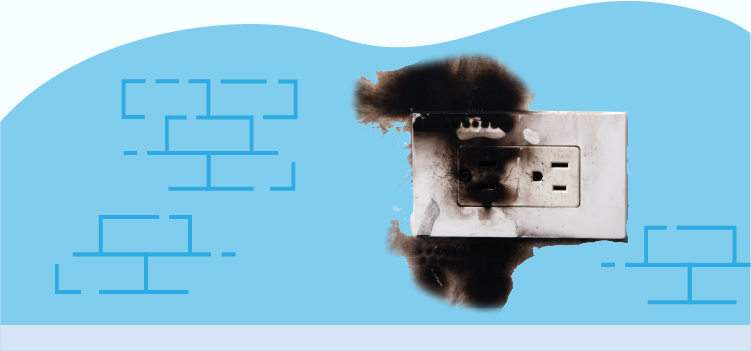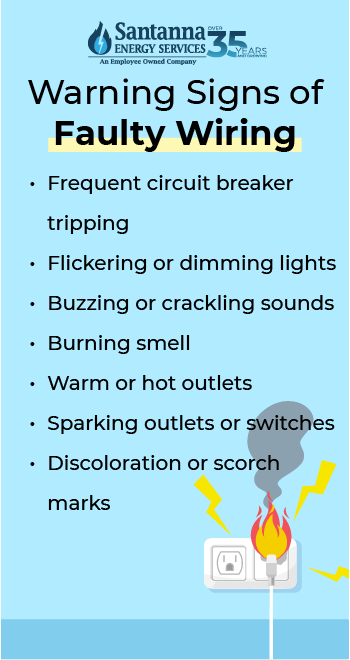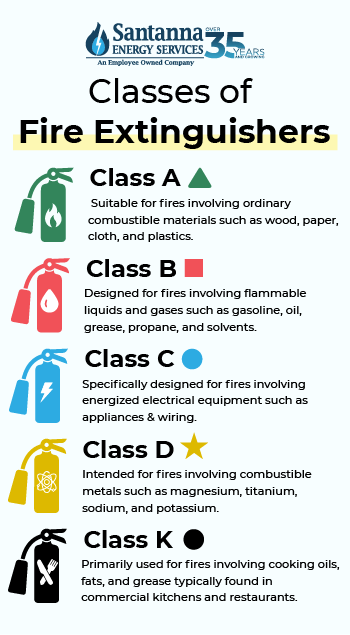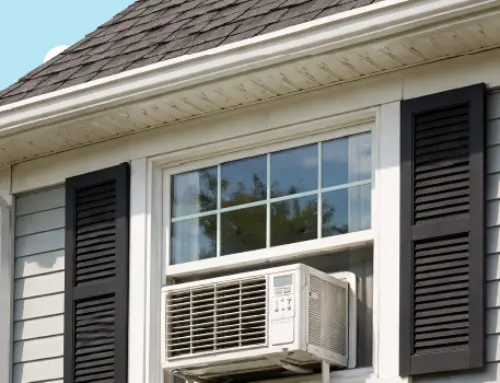Electrical Fires: How They Start and How to Put Them Out
by Tyler Castle
10.2 min read

Electrical fires pose a unique and often underestimated threat in our homes and can happen at any time. Unlike traditional fires fueled by combustible materials, electrical fires originate from faults in electrical systems, making them challenging to detect and extinguish.
Understanding these fires and how to protect yourself and your home against them is something everyone should know. Not to worry, we’ll break down everything you need to know about these fires to ensure a safe and relaxing home.
Key Points of This Article:
- Electrical fires start when outlets, wiring, or appliances overheat due to issues like overloaded circuits, short circuits, damaged cords, or faulty equipment.
- These fires spread quickly, cannot be extinguished with water, and often show warning signs such as burning smells, hot outlets, or smoke.
- Small electrical fires can sometimes be controlled by cutting power, using baking soda, or smothering flames, while larger fires require a Class C extinguisher and immediate evacuation.
- After an electrical fire, professionals should inspect wiring and structural damage, and homeowners should take preventive steps such as installing smoke detectors, avoiding overloaded circuits, and maintaining electrical systems.
What is an electrical fire?
An electrical fire is often categorized by malfunctioning electrical outlets or equipment in a residential home or commercial business. These types of fires result from overheating of electrical components. This result is often because of excessive use, short circuits, and more.
An electrical fire is often categorized by malfunctioning electrical outlets or equipment in a residential home or commercial business. Electrical fires often occur in residential homes, older buildings that are over 20 years with outdated wiring, and commercial spaces where faulty equipment or overloaded circuits are common. Electrical fires spread quickly, are difficult to detect, cannot be extinguished with water, and pose a serious risk of injury and significant property damage.
What causes electrical fires?
Many things in the home cause an electrical ignition. In fact, electrical fires are the third leading cause of home structure fires. Some of the most common causes include:
- Overloaded Circuits: When too many devices are plugged into a single circuit, it exceeds its capacity, causing the circuit to overheat and potentially ignite nearby materials.
- Short Circuits: A short circuit happens when live electrical wires come into contact, creating a sudden surge of current that generates intense heat and sparks.
- Electrical Appliances and Equipment: Malfunctioning or outdated appliances, like toasters, space heaters, or refrigerators, can overheat or create sparks, especially when improperly maintained.
- Overloaded Outlets and Extension Cords: Plugging multiple high-power devices into one outlet or using improper extension cords can overheat the wiring, causing sparks and can start a fire.
- Improper Use of Electrical Cords: Damaged, frayed, or improperly used cords—like running them under rugs or pinching them behind furniture—can overheat or expose live wires.
- Flammable Materials Near Electrical Sources: Placing fabrics, papers, or other flammable items near heaters, outlets, or exposed wires increases the risk of ignition.
- Lightning Strikes: A lightning strike can cause electrical surges, damaging wiring and appliances, leading to fires.
- Electrical System Defects: Poor installation, aged wiring, or lack of proper maintenance can weaken the electrical system, increasing fire risks over time.
How can electrical fires start?
An electrically ignited fire can start in a multitude of ways. Some of the most common scenarios involve overcrowded outlets. This can happen when too many devices are plugged in at once which causes outlets to overheat.
Malfunctioning equipment is also a common fire starter. Things like circuit breakers, switches, or outlets, can develop faults that lead to electrical fires. Incorrectly installed or poorly maintained electrical systems are more prone to faults and fires as well.
One popular starter of electric fires is faulty wiring. Damaged wiring, such as frayed insulation or exposed conductors, can create sparks or generate heat, leading to ignition. Here are some of the most common warning signs of faulty wiring that may lead to a fire in your home:

Can static electricity start a fire?
Under the right conditions, static electricity can start a fire. According to experts at the Missouri University of Science and Technology, static discharges can be enough to ignite fires.
Fortunately, the energy released from common activities like rubbing your feet on the floor is typically not sufficient to cause a fire in your home. However, most human-involved static electricity fires start with flammable fuel vapors and gases. This means, that if you were to build up enough of a static charge and then touch a combustible material like gas, you could inadvertently put yourself at risk of starting a fire.
What does an electrical fire smell like?
Most experts associate electrical fires with the smell of burning rubber or burning plastic. The smell comes from the insulation around wires that begin to burn and release chemicals into the air.
Other signs of an electrical fire can be a hot outlet or smoke. If you suspect or see any of these signs, it’s important to call your local fire department right away as even a small electrical fire can trickle into significant damage and health risks.
How to put out an electrical fire
Knowing how to put out an electrical fire can make the difference between controlling the situation and putting yourself in danger. Electrical fires require special handling while knowing the right process. Here’s how to stop an electrical fire:
Step 1: Stay Calm – It’s crucial to remain calm and composed, to think clearly and act effectively if you’re amongst a fire.
Step 2: Cut Off the Power – Quickly locate the main electrical panel or circuit breaker box in your home. Shut off the power to the affected area by flipping the corresponding circuit breaker or removing the fuse to cut off power from the source.
Step 3: If the Fire is Small Enough, Douse it with Baking Soda – For small fires (like a toaster fire or a small outlet fire) baking soda helps remove the oxygen from the fire. Before performing this step, be sure you’re using baking soda and not baking powder. Baking powder can cause a significant explosion under the right conditions.
Step 4: Use a Fire Blanket or Heavy Item of Clothing to Put Out Small Fires – Smother small fires with a fire blanket or heavy, non-flammable clothing to cut off oxygen. Avoid synthetic fabrics and prioritize safety.
Step 5: For Larger Fires, Use a Fire Extinguisher – Use a fire extinguisher specifically rated for electrical fires. Remember to aim at the base of the flames and sweep the extinguisher from side to side until the fire is fully extinguished.
Step 6: Evacuate Safely – If the fire is spreading rapidly or you’re unable to extinguish the fire safely, evacuate the premises immediately.
Step 7: Call Emergency Services and Do Not Re-enter – Once safely outside, call emergency services (such as the fire department) to report the fire. Provide them with your location and details about the situation. For your safety, do not enter your home until authorities say it is safe. Hidden hazards, such as smoldering embers or live electrical currents, may still exist.
Can you put out an electrical fire with water?
If you find yourself at odds with an electrical fire, do not put it out with water! Water is an excellent conductor of electricity. Using water to extinguish an electrical fire can result in electric shock or electrocution.
What type of fire extinguisher should I use for an electrical fire?
You should use a “Class C” fire extinguisher to put out an electrical fire. This type of extinguisher is specifically designed to douse electrical fires.
Fire extinguishers are classified into several types: A, ABC, BC, or K. It is important to use the right type of extinguisher on the specific class of fire to avoid personal injury or damage to property.

Post-fire actions
Be sure to ventilate the space carefully to clear out smoke and toxic fumes if the structure is stable. If your post electrical problem proceeds or your outlet continues to smolder, hire a certified electrician to inspect all wiring, outlets, appliances, and electrical systems to identify the root cause of the fire and prevent recurrence. Professionals test for damaged circuits, overloaded wiring, and signs of melted or burned electrical components.
In the same way, be sure to assess and take into account the structural damage caused by your electrical fire. A licensed contractor or inspector can evaluate the structural integrity of walls, floors, ceilings, and surrounding materials, as fires weaken structures, making them unsafe. Pay special attention to hidden damage behind walls, as electrical fires often burn unseen areas before spreading.
Following repairs, ensure a thorough test of the entire electrical system. This includes checking circuits, outlets, switches, and the breaker panel for proper functioning and safety compliance. Install arc fault circuit interrupters (AFCIs) and ground fault circuit interrupters (GFCIs) to reduce the risk of future electrical fires.
If the damage from an electrical fire is extensive, be sure to document the damage for insurance. Take detailed photos and videos of all fire-damaged areas, appliances, and structural components for your insurance claim. Make a list of all the personal belongings that were harmed by the smoke or fire and contact your insurance provider promptly to begin the claims process and discuss coverage for repairs or replacements.
Discard any appliances, wiring, furniture, or other items that were damaged by the fire, smoke, or heat. Even if they appear functional, they may pose safety hazards. Replace damaged electrical panels, outlets, cords, or other components as advised by your electrician.
Improve your fire safety measures by:
- Install Smoke Detectors: Ensure smoke alarms are installed in key areas of your home or building, and test them regularly.
- Keep Class C Fire Extinguishers: Place fire extinguishers in accessible areas, especially near kitchens, breaker panels, and workshops.
- Practice Prevention: Avoid overloading circuits, replace damaged cords, and have regular electrical inspections, especially in older buildings.
Electrical fire prevention tips
Once you’ve put out your electrical fire, it’s important to take steps to ensure this never happens again. Here are some of our most helpful tips for electrical fire prevention:
- Conduct regular inspections of your electrical system. Be sure to inspect outlets, wiring, and switches on your appliances.
- Schedule regular maintenance by a qualified electrician to inspect and maintain your electrical system.
- Install surge protectors to safeguard sensitive electronics and appliances from power surges.
- Unplug your appliances when not in use. Even when they’re plugged in, appliances still draw energy which can increase the risk of a fire.
- Keep flammable materials such as paper, cloth, or chemicals away from electrical outlets.
- Install smoke detectors and fire alarms throughout your home.
Electrical cord safety tips
- Check electrical cords regularly for signs of damage, such as fraying, cuts, or exposed wires.
- Use cords that are rated for the intended use and environment. Indoor cords should not be used outdoors, and vice versa.
- Do not overload electrical cords by plugging too many devices into a single outlet.
- When unplugging devices, grasp the plug itself rather than pulling on the cord.
- Keep electrical cords away from water, moisture, and heat sources.
- Avoid placing cords in high-traffic areas where they can be stepped on or tripped over.
- If a plug is damaged or loose-fitting, replace it immediately to prevent electrical hazards.
These fires present a unique threat in our homes and workplaces, originating from faults within our electrical systems. Understanding the causes and characteristics of electrical fires empowers us to take proactive measures to prevent them from occurring. We hope we’ve helped make your home a safer place!
There's peace of mind in knowing your house is as safe as it can be. And there's peace of mind in knowing you'll pay the same monthly amount for your electricity or natural gas supply without any uncertainty — no matter what. Santanna's Unlimited Energy option protects your bills from fluctuating supply charges no matter the changes in seasons. For over 35 years, Santanna has served customers in Illinois, Indiana, Pennsylvania, Michigan, and Ohio. Our mission is to provide innovative and cost-effective energy solutions that will help our customers achieve their energy goals.
Tyler is an experienced energy professional, having worked for Santanna Energy Services, for the past four years. He is passionate about renewable energy and believes that diversifying the energy grid is the key to a sustainable future. Tyler is dedicated to supplying consumers with the best possible energy solutions and works diligently to make sure that Santanna can deliver the highest quality service.







